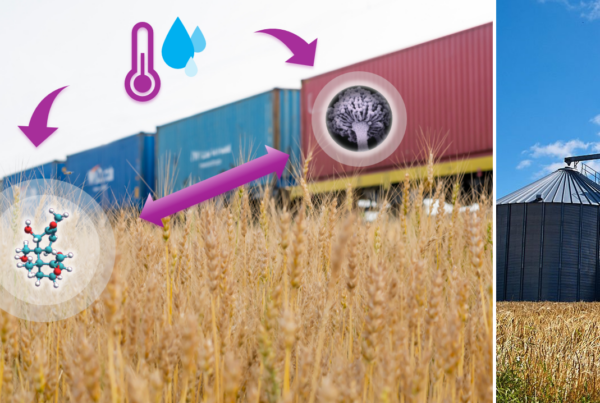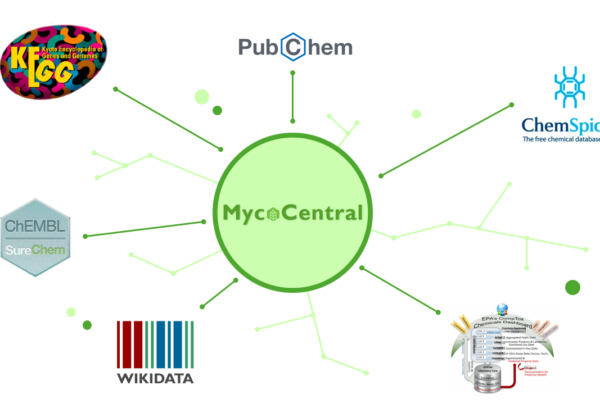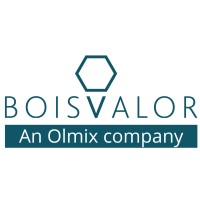Olmix Group co-hosted the first Olmix Health & Nutrition Poultry Seminar with several partners in the United Arab Emirates. The event shed light on the hottest topics concerning the livestock sector and was particularly focused in poultry production.
Another milestone in the promotion of algae-based technologies at the service of plants, animals and humans was reached last week in Dubai, United Arab Emirates, where Olmix Group hosted its first technical seminar in the Middle-East from 18-19 January.
130 attendees from the United Arab Emirates, Oman, Pakistan and India gathered together for a two-day journey that highlighted the diverse use and benefits of algal-resources and pointed out the high necessity to move towards better use of earth resources in animal nutrition and always more efficient animal production while reducing the use of antibiotics, where Olmix is precisely putting all the efforts in order to reach a full healthy food chain thanks to algae-based natural alternatives.
“I would like to thank you all for joining us in the first Olmix’s seminar on health and nutrition in the Middle-East. There was no better place to host this special event than Dubai, close to the sea, where our innovative resources and technology comes from. I am sure this event will mark a before and after in the Olmix’s strategy and presence in the Middle East”, Mr Matthieu Le Moigne, Olmix’s Area Manager in the Middle East, said during the welcome dinner at the Hotel Sofitel The Palm in Dubai, where the whole event took place.
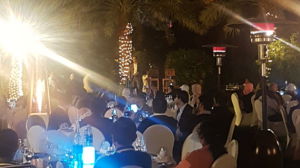
Mr Matthieu Le Moigne welcomed the participants of the seminar.
Algae technology at the Conference Programme
The Conference Programme -held on Friday, 19 January- counted on 4 high-level lectures that aimed first at giving the audience an overview on the recent trends in animal production, particularly in poultry, and then show some efficient strategies to face the main challenges in the field.
Dr Martin Scholten, General Director of Animal & Marine Sciences at the Wageningen University & Research (the Netherlands) was the first to step up on stage to share his thoughts on the current food production system and the changes it should embrace to get adapted to the new era we are already living in:
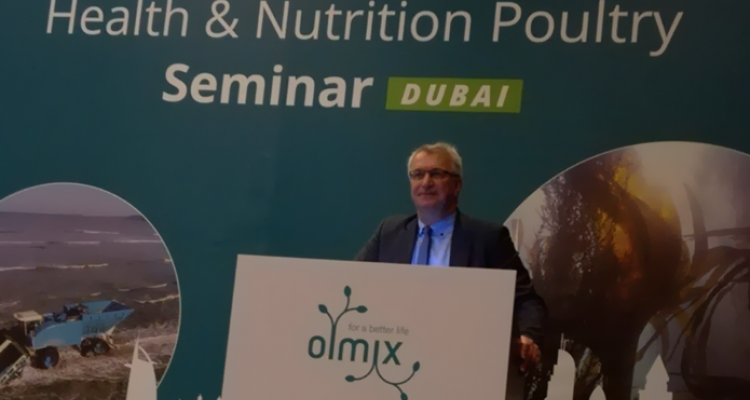
Dr Martin Scholten: “HealthSea Food Security, Thanks to Algae”
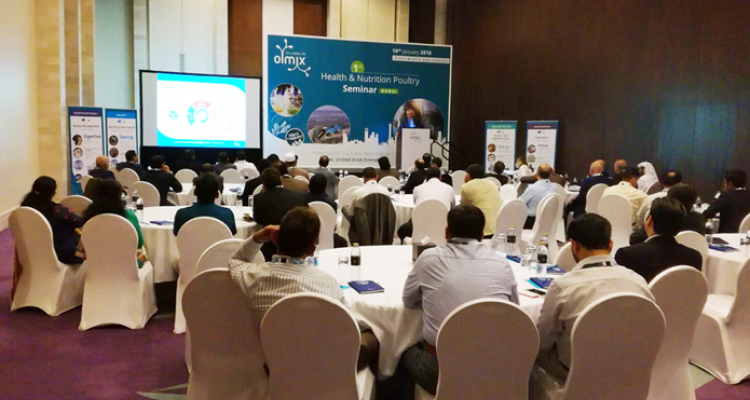
Dr Martin Scholten: “HealthSea Food Security, Thanks to Algae”
Algae continued being the focus of attention for the second speech of the day. Ms Danièle Marzin, Olmix Group’s Marketing Director, took up the torch to provide an inside insight of the specific algae-based metabolites and their functionality to optimize growth, health and welfare of animals:
“In order to make the most of the properties of seaweeds, algae extraction technologies are the key factor. Olmix has developed a whole process to valorize the extraordinary properties of algae from harvest to the final products (biorefinery process). Our great invest on innovative technologies has allowed us to deposit 20 different patents. Olmix Group believes that investment in R&D and partnerships with institutes and universities specialised in algae or animal nutrition worldwide is the key to develop a healthy food chain Thanks to Algae!“.
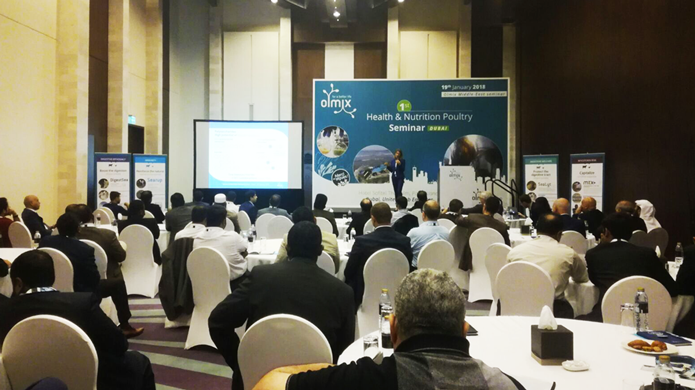
Ms Danièle Marzin: ‘Innovative algae-based solutions for optimized growth, health and welfare’.
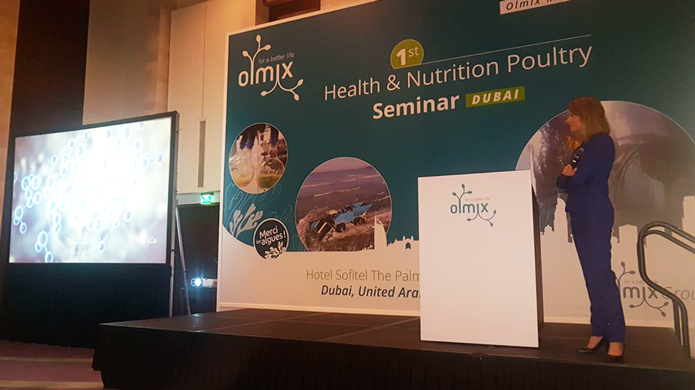
Ms Danièle Marzin: ‘Innovative algae-based solutions for optimized growth, health and welfare’.
Poultry production and mycotoxin risk
After a short break, it was just a matter of time for the event to get into a more poultry-focused speech, and that came along with the presence of Dr Jayraman, Poultry Pathologist expert from India, on stage.
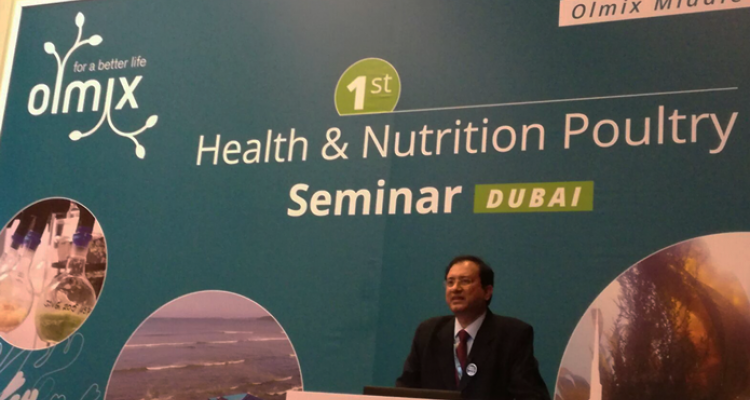
Dr Jayraman: ” Recent Trends in Poultry Prodruction. An Overview”.

Dr Jayraman: ” Recent Trends in Poultry Prodruction. An Overview”.
“As storage conditions have improved a lot, now the main mycotoxins originate from the field. So, fusariotoxins as DON, ZEA and FUMO are the most occurring toxins worldwide. In poultry, intestinal absorption of trichothecenes is low. However, they can still be dangerous as they can hurt before being absorbed! They are impairing cell membranes; especially they de-structure the intestinal wall, opening the door for other toxins and pathogens. As for fumonisins, they amplify the detrimental effects of trichothecenes as they inhibit the renewal of the intestinal cells. So, there is a really powerful detrimental synergy between DON and FUMO”, she said.
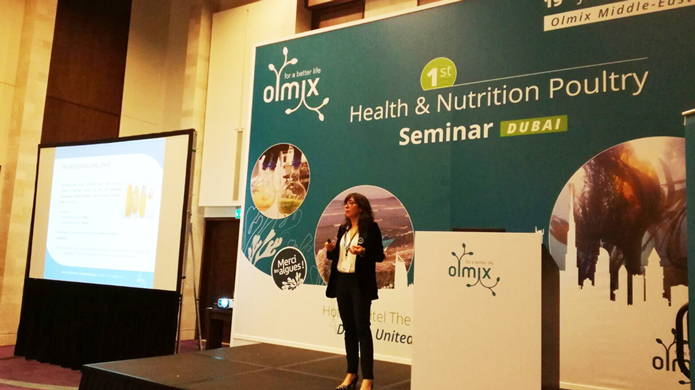
Ms María Ángeles Rodríguez: ‘Mycotoxin risk and the role of intestinal immunity in animal performance’.
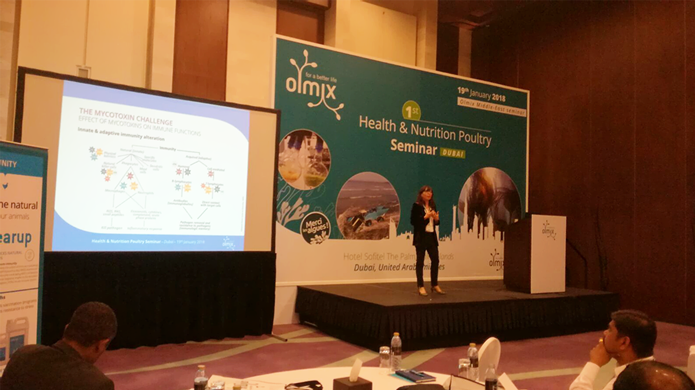
Ms María Ángeles Rodríguez: ‘Mycotoxin risk and the role of intestinal immunity in animal performance’.
Therefore, Ms Rodríguez bets on the use wide-spectrum toxin binders along with the use of algae extracts in order to improve the animal resistance to mycotoxins and get better status and results in the farm:
“Toxin binders must have the capacity to tackle a wide range of toxins with different structure, polarity, flexibility and size, among others. Together with toxin binders we can use algae extracts (Olmix MSP®) with immunomodulating properties, mucin secretion or lipid metabolism, to act in synergy to improve resistance of animals to mycotoxins”.
Once the conferences were over, all guests and speakers had lunch together in the best possible atmosphere.
We are looking forward to hosting the next technical seminar in the Middle East! Or meet us up at GFIA and VIV MEA next February!
